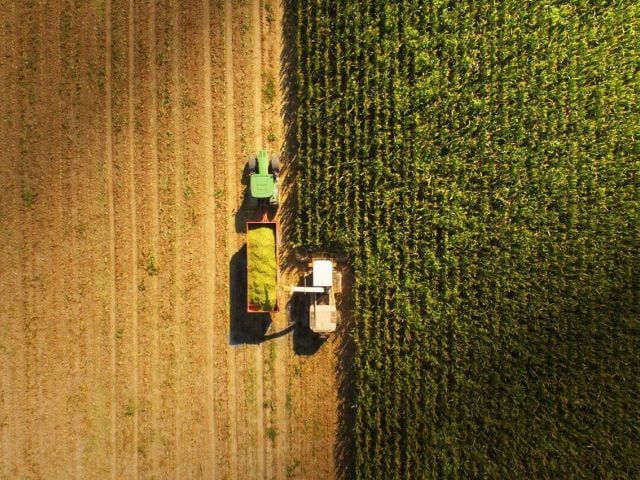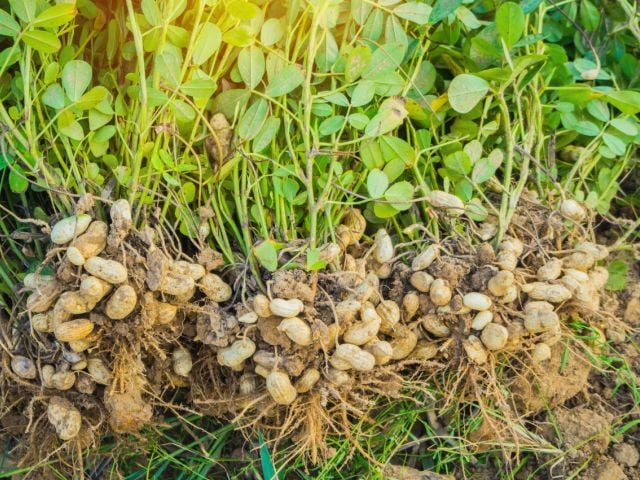WASHINGTON – Even as the climate emergency drives rising heat and worsening drought in the West, two major Department of Agriculture programs fail to help Colorado River region farmers adapt to climate change, a new Environmental Working Group investigation finds.
The heavily taxpayer-subsidized federal Crop Insurance Program paid $5.6 billion to farmers in Arizona, California, Colorado, Nevada, New Mexico, Utah and Wyoming for drought-related losses between 2017 and 2023.
During the same period, the USDA paid $521.7 million to farmers in the region to install irrigation practices through its Environmental Quality Incentives Program, or EQIP, one of the agency’s largest conservation initiatives. An astonishing three-fourths of the water pulled from the Colorado River is used to irrigate crops.
“The USDA has an important role to play in helping farmers in Western states – and in other climate-vulnerable agricultural regions – adapt to climate change,” said report author Anne Schechinger, EWG Midwest director and agricultural economist. “The Colorado River region is only going to get hotter and drier, so the government must incentivize growers to make better decisions about what they plant and where.”
Drought-related crop insurance payments
Alfalfa and other types of hay alone account for almost half – 46 percent – of all Colorado River water consumption. Unsurprisingly, farmers of these and other livestock feed crops also got the most drought-related crop insurance payments, more than $2 billion.
To determine drought-related indemnities, EWG combined payments for drought, heat, failure in irrigation water supply or irrigation equipment, and “rainfall index” policies, which pay out if the farmer’s local area receives less rain during part of the growing season than long-term averages.
Of the seven states, farmers in California collected by far the most drought-related payments, $2.1 billion, and Colorado the second most, over $1 billion.
Although much of California’s agricultural land is outside the Colorado River Basin, some of the river’s water is channeled to farms (and cities) there. And in the seven basin states, the increasing drought conditions and dwindling water resources within the basin match conditions outside the basin.
Irrigation payments
The EQIP conservation initiative gives farmers money and technical assistance to implement conservation practices on working farmland. The program includes conservation practices like cover crops and grassed waterways, as well as structural, equipment and facility practices like fencing and pipes.
Farmers can’t use EQIP funds to bring any new acres under irrigation, but the program does subsidize the implementation of certain types of watering practices for crops already being irrigated. For example, EQIP pays farmers to switch from dirt irrigation ditches to plastic irrigation pipes.
But in many Western states, “use it or lose it” water rights policies encourage farmers to use their entire water allotment, even if their crops don’t need that amount of water. So more efficient irrigation practices likely don’t reduce total water use.
Policy change is needed
Conservation dollars spent to update irrigation systems are funds that aren’t spent helping Western farmers adapt and become more resilient to climate change.
At the same time, prior EWG analyses have shown that only a small portion of the agency’s total conservation dollars funds climate-smart practices proven to help farmers reduce greenhouse gas emissions.
“The USDA’s conservation and crop insurance programs must be reformed to help farmers adapt to drought and reduce funding for farming practices that undermine the region’s climate resilience,” Schechinger said. “But with or without these changes, in the near future, farmers in the West will not be able to farm what and how they farm today.”
###
The Environmental Working Group is a nonprofit, non-partisan organization that empowers people to live healthier lives in a healthier environment. Through research, advocacy and unique education tools, EWG drives consumer choice and civic action.



